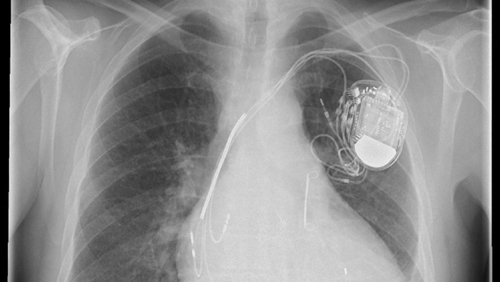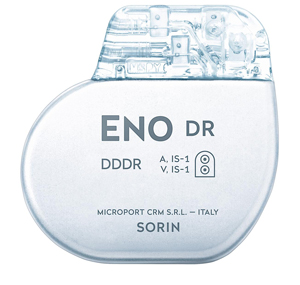Heart surgery | Pacemaker surgery
The only treatment in the field of cardiac or heart surgery performed at the Pyramid Clinic is pacemaker surgery.
MODERN PACEMAKERS
Pacemakers are now very small (smaller than a wristwatch), have a battery life of over 10 years, and are barely seen or felt after implantation.
Patients can continue to live and enjoy everyday life with very few limitations. Modern pacemakers can also send data to your doctor electronically via Bluetooth.
WHO NEEDS A PACEMAKER?
- If your pulse is too slow: Bradycardia. If your pulse becomes too slow, either because your heart’s own pacemaker is sick (sick sinus syndrome) or if the conduction from the small ventricle to the large ventricle is impaired (AV block)
- If your pulse is too fast: Tachycardia. In this situation, the pacemaker will replace the heart’s own internal pacemaker to make the pulse slower
- When the transmission of the pulse from the small chamber (A for atrium) to the large chamber (V for ventricle) is impaired. In this situation, the term AV block is used. There are different degrees of AV block. For a 1st-degree AV block, a pacemaker is not needed. For a 2nd-degree AV block, a pacemaker can be discussed, but for a 3rd-degree AV block, it is absolutely necessary
WHAT IS A PACEMAKER MADE OF?
Housing: This contains the battery and all the electronics that control the pacemaker. As well as detecting the heart’s activity, a pacemaker also registers the body’s movements and breathing rate.
Electrodes: These are the wires or leads that are implanted in the heart. These leads are the sensors in the chambers that tell the pacemaker what each chamber is ‘doing’ and transmit the electrical impulse to make your heart beat.

TYPES OF PACEMAKERS
- Single-chamber: For bradycardia and pauses with atrial fibrillation, only one lead is placed in the ventricle
- Dual-chamber: For heart blocks
- Biventricular: For weakness of the heart muscle
- Leadless pacemakers
WHERE IS THE PACEMAKER IMPLANTED?
Under the skin, usually under the left collarbone in a pocket created in the muscle. However, implantation on the right side or under the muscle is also feasible in certain cases. From there, the leads are advanced via a vein to the heart, where it is implanted. After a few weeks, it is often unnoticeable from the outside.
PACEMAKER IMPLANTATION PROCEDURE
Before surgery
The surgeon will explain the use of blood thinners.
At the same time, the surgeon will ask the patient if they feel completely well or if they have a cold or other medical condition. This discussion usually occurs at the doctor’s practice, before entering the clinic.
On the day of surgery
You must enter the clinic fasting, i.e., for 24 hours before the operation, you must not eat anything and can only drink clear liquids. On admission, you are escorted to the recovery room where you are prepared for the procedure. The surgeon will come to see you there before you are taken to the operating theatre.
During surgery
You will be awake during the procedure. First, everything will be cleaned and covered. Then the surgeon will administer the local anaesthetic and the anaesthesiologist will administer a very mild, short-acting sleeping aid. Pacemaker implantation consists of inserting the sensors into the heart through a vein and placing the battery under the skin. The procedure usually takes between 20 and 40 minutes.
After surgery
This is followed by about two hours in the Recovery Room with a sandbag on the wound for light compression. Water and a light snack will be handed out during this time. Afterwards, you will either be discharged home or taken to your room, where you will stay for the night. On the first day after surgery, you will meet your surgeon for a follow-up consultation.
FOLLOW-UP CARE
Follow-up care of the wound is carried out by the surgeon. The annual check-ups are then usually with your own cardiologist.
WHO WILL IMPLANT MY PACEMAKER?
With over 20 years of experience as a cardiac surgeon, Professor Sacha Salzberg has implanted many pacemakers. Pacemaker implantations have become routine procedures and are very common nowadays.